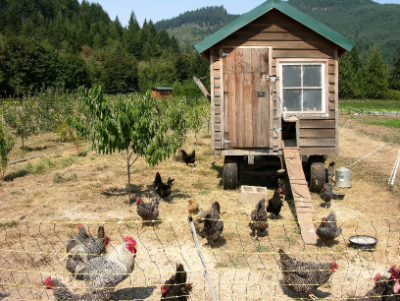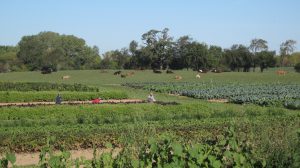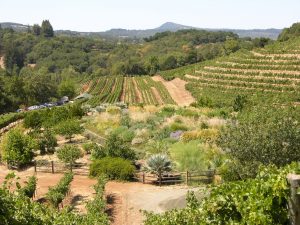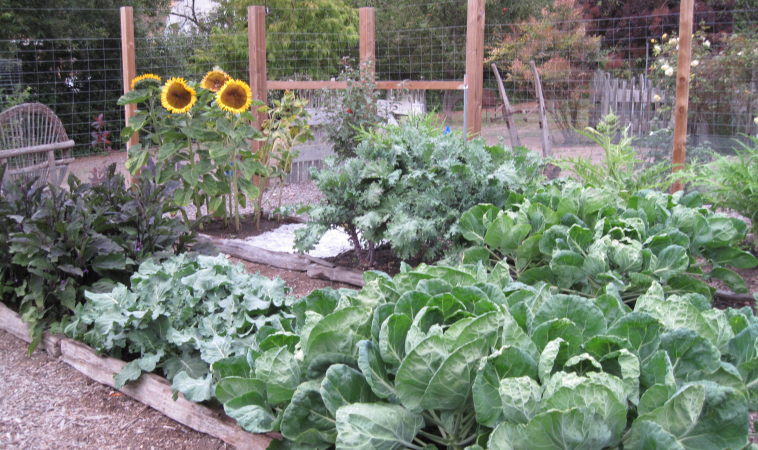What is the biodynamic way, and how did these practices come about?
Biodynamics is a holistic, ecological, and ethical approach to farming, gardening, food, and nutrition.
Biodynamics was developed in central Europe in the early 1920s by the Austrian philosopher and social reformer Rudolf Steiner, who one of the pioneers of the organic farming movement. Biodynamics is considered by many to be the most advanced and holistic form of farming and gardening on the planet. Steiner’s insights have also led to innovative movements in a number of other fields such as education (Waldorf schools), medicine, finance, and social therapy.
Steiner developed biodynamics in partnership with a group of farmers who were concerned with declines in soil, plant and animal health that they were witnessing on their farms. This was just at the time when a highly mechanistic view of nature was beginning to take hold in agriculture, which led to the development and use of synthetically produced nitrogen fertilizers. Steiner was one of the first public figures to warn that the widespread use of chemical fertilizers would lead to the decline of soil, plant and animal health and the subsequent devitalization of food. Over the subsequent decades, farmers, gardeners, and researchers all over the world have built upon the foundations Steiner laid, further developing the understanding and practice of biodynamics.
What are some ideals you strive for in farming?
 The Biodynamic Association awakens and enlivens co-creative relationships between humans and the earth, transforming the practice and culture of agriculture to renew the vitality of the earth, the integrity of our food, and the health and wholeness of our communities. Biodynamic methods work towards these ideals through treating farms and gardens as living organisms, integrating crops and livestock, enhancing on-farm biodiversity and closed-loop fertility, and cooperating with the influences of the sun, moon, and planets on the earth.
The Biodynamic Association awakens and enlivens co-creative relationships between humans and the earth, transforming the practice and culture of agriculture to renew the vitality of the earth, the integrity of our food, and the health and wholeness of our communities. Biodynamic methods work towards these ideals through treating farms and gardens as living organisms, integrating crops and livestock, enhancing on-farm biodiversity and closed-loop fertility, and cooperating with the influences of the sun, moon, and planets on the earth.
Most biodynamic farms also seek to embody innovative approaches to the economic dimension of the farm, taking inspiration from Steiner’s insights into social and economic life that emphasized the need for cooperation and transparency. The aim to create associative economic relationships between farms and consumers sparked the CSA movement, which originated with biodynamic farms and has now been taken up by more than 6,000 farms in the United States. Many biodynamic practitioners also work in creative partnerships with other farms and with schools, medical and wellness facilities, restaurants, hotels, homes for social therapy, and other community-based organizations.
What differentiates biodynamics from other sustainable farming practices?
Biodynamic farmers view their farms as living organisms, and strive to find a balance and diversity of crops and livestock that enables the farm to be as self-sustaining as possible. Animals are stocked at a rate so that their manure provides adequate fertility for the crops being grown, and sufficient acreage is devoted to pasture and forage to provide for the needs of the animals. Thus, imported fertilizers and feeds are kept to a minimum, and this contributes both to the ecological health of the farm and the development of a true farm “individuality” that is a coherent whole.
Biodynamics also incorporates the use of nine preparations made from fermented manure, herbs (yarrow, chamomile, stinging nettle, oak bark, dandelion, valerian, and horsetail), and the mineral silica. The biodynamic preparations are used as field sprays and in the making of compost to stimulate specific processes within the farm. The preparations enhance the beneficial effects of good farming practices and have been shown to help remediate the impact of pollution and balance the effects of extreme weather.
 Another unique aspect of biodynamic agriculture is the attention paid to the influences and rhythms of the sun, moon, and planets. Just as the moon creates the tides in our oceans, each of these celestial bodies has subtle influences on the growth and development of plants and animals. Based on Steiner’s insights and subsequent research, a number of biodynamic calendars have been developed that offer indications for optimal times for sowing, cultivating, and harvesting, based on the cyclical changes in the positions of the celestial bodies in relation to the earth.
Another unique aspect of biodynamic agriculture is the attention paid to the influences and rhythms of the sun, moon, and planets. Just as the moon creates the tides in our oceans, each of these celestial bodies has subtle influences on the growth and development of plants and animals. Based on Steiner’s insights and subsequent research, a number of biodynamic calendars have been developed that offer indications for optimal times for sowing, cultivating, and harvesting, based on the cyclical changes in the positions of the celestial bodies in relation to the earth.
Biodynamics is ultimately not just a set of alternative agricultural methods but a way of seeing and understanding the natural world. Biodynamic farmers work to develop their capacity to sense and observe the more subtle forces at work in nature, and to use their own insights to further enhance the vitality of their farms. The biodynamic methods are thus in a continuous state of evolution and individualization.
Are there elements of biodynamic farming that people can bring into their home gardens?
Integrating animal life, working with the biodynamic preparations, companion planting, and paying attention to the rhythms of the sun, moon, and planets are all possible on a home garden scale. Most home gardeners focus on plants, so beginning to pay attention to the animal elements of your garden — earthworms, bees and butterflies, songbirds — is a good start. You might also consider chickens, rabbits, or other small livestock. The biodynamic preparations can be added to your garden compost pile and sprayed on your garden soil and crops. Companion planting is another key biodynamic strategy that is highly suitable for home gardeners. And you can use a biodynamic calendar to track your work in your garden over the seasons and begin to notice the influences that planetary movements are having on your crops.
What does the biodynamic farming movement look like? Is it practical for larger companies?
Biodynamics is practiced on more than 350,000 acres of farmland in 47 countries. The biodynamic movement encompasses thousands of successful gardens, farms, vineyards, and agricultural operations of all kinds and sizes on all continents, in a wide variety of ecological and economic settings. Biodynamically grown produce is available through many farms that sell directly through community supported agriculture. More and more food companies are developing certified Biodynamic product lines to bring to consumers, with items such as tea, wine, flour, pasta sauces, and jams available on store shelves.
As biodynamics was started in the 1920s, you are coming up on the 100 year anniversary in a few years. What have you accomplished in that time and what is on the horizon?
For the past 90 years, biodynamic insights and practitioners have played a key role in seeding the food revolution—from  helping shape the early organic farming movement, to catalyzing the work of Silent Spring author Rachel Carson, to pioneering community supported agriculture (CSA) and the CRAFT program, to demonstrating how to bring health and flavor back to foods like milk and wine. Biodynamics has been a potent force for change.
helping shape the early organic farming movement, to catalyzing the work of Silent Spring author Rachel Carson, to pioneering community supported agriculture (CSA) and the CRAFT program, to demonstrating how to bring health and flavor back to foods like milk and wine. Biodynamics has been a potent force for change.
In addition, since the 1920s thousands of biodynamic farmers and gardeners have developed their understanding of Steiner’s insights and refined the practice through research and observation of what works and what doesn’t and have started highly successful farming operations. The work, experiences, and wisdom of these farmers and gardeners gives biodynamics a strong foundation as it enters more broadly into the public consciousness.
As we look to the future, we believe that many of the environmental problems associated with global warming and climate change will not be able to be addressed from a purely mechanistic model of the universe. After all, that is the paradigm that has led to these problems in the first place. Creative insights from biodynamics into the more subtle workings of nature will be necessary to bring health and healing to the land and the planet as a whole. We are eager to play an ever more active role in the future in bringing our contribution to these issues that are intimately connected with, but not restricted to, the domain of agriculture.
We also see a need to make biodynamics ever more visible and accessible to the millions of people who are waking up to the earth and seeking a deeper connection with the land, their food, and their communities. This includes the thousands of young people who are being called to become farmers who are so desperately in need of training, mentoring, and help with access to land and capital. We are currently building out our connections to the land trust and social finance communities so that we can be more effective in helping this next generation of agriculturalists who have a heart for the deeper needs of the earth.
All of the above will ask our organization to keep growing and evolving so that we can refine and enhance our understanding of biodynamics as a science and a practice and be ever more effective in catalyzing the services, conducting the research and education, and creating the resources needed to grow this movement.
The vitality of our food, farms, and communities has been depleted by the modern industrial agricultural system. Biodynamics offers a pathway into deep agricultural renewal. It is a way of seeing, a way of farming, and a way of creating community that restores the very heart of what it means to be human on Earth.
















